Learn more about leading a climate walk in brief
- Overview
Lead a guided tour through your neighbourhood to showcase sustainable practices on the ground and inspire others to take action. Tell a story of how we can tackle the impacts of climate change and develop concrete solutions. Showcase citizen and community initiatives supporting the green transition... and have fun!
- Objectives
Increase awareness, knowledge, empathy and emotional response to local climate change impacts, initiatives and opportunities. Build an understanding and support for local/regional/national/EU climate policies and the European Climate Pact.
- Target group
General public. This activity can be used with a wide variety of target groups, such as school groups, seniors, company employees, climate activists, and others.
- Requirements
In principle, this activity can be applied everywhere and with all target groups but accessibility and mobility should be considered. Define your tour itinerary based on the age and physical condition of your participants – make it safe, comfortable and easy for all.
Climate walk in action
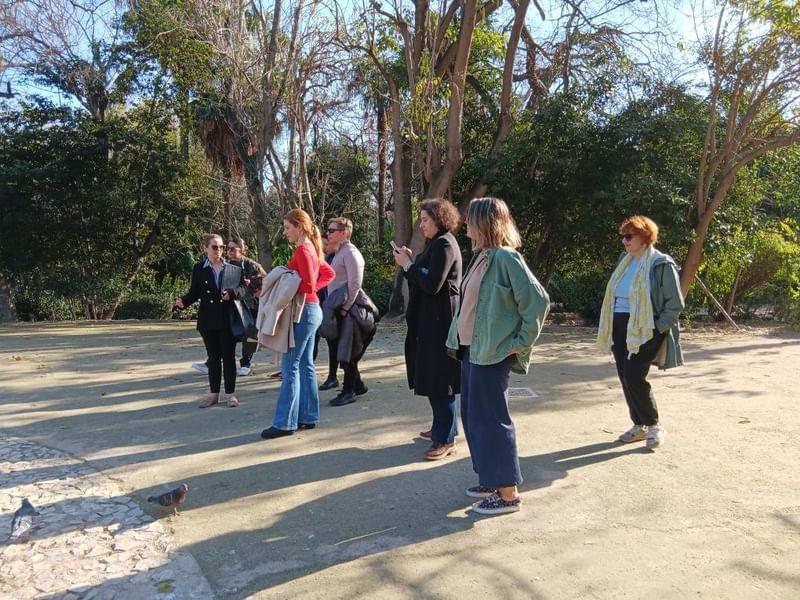
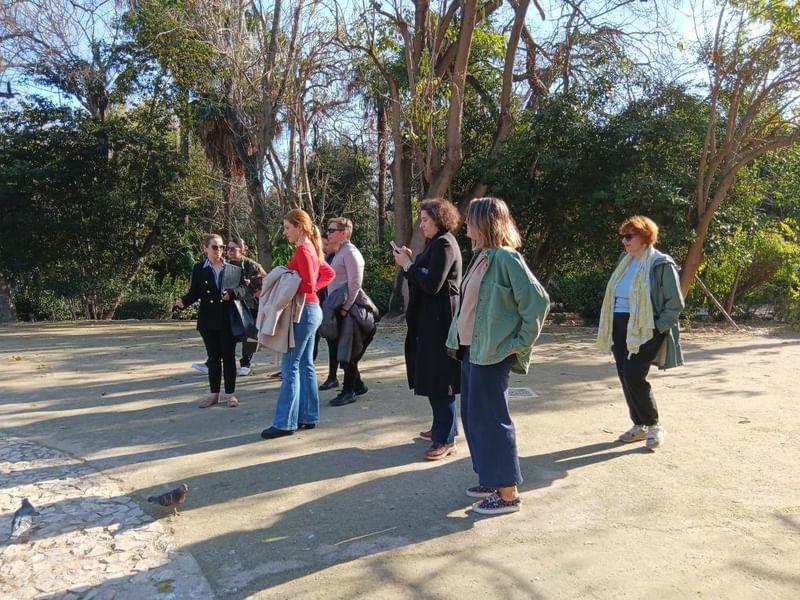
Pact Ambassadors Ifigeneia Souflia, Alexandra Politaki and Christina Sarri led a climate walk, Athens National Garden, 24 February 2024.Pact Ambassadors Ifigeneia Souflia, Alexandra Politaki and Christina Sarri led a climate walk, Athens National Garden, 24 February 2024. 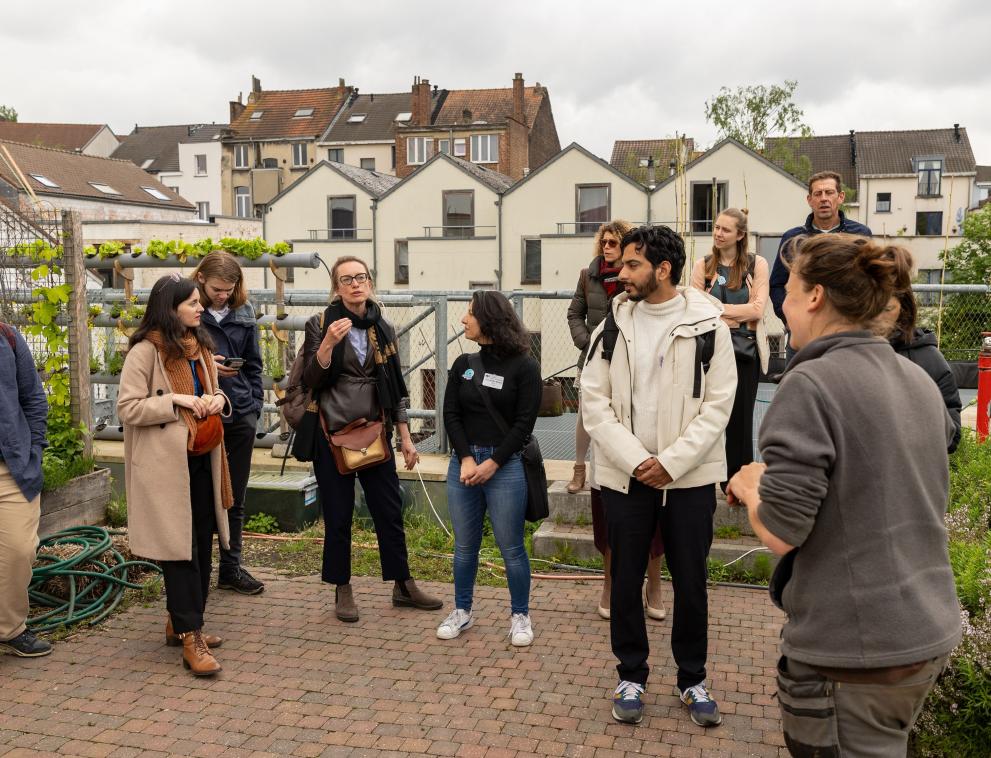

A climate walk stopped at the Refresh rooftop garden to learn about the why and how of this local garden project, Brussels, 8 May 2024.A climate walk stopped at the Refresh rooftop garden to learn about the why and how of this local garden project, Brussels, 8 May 2024. 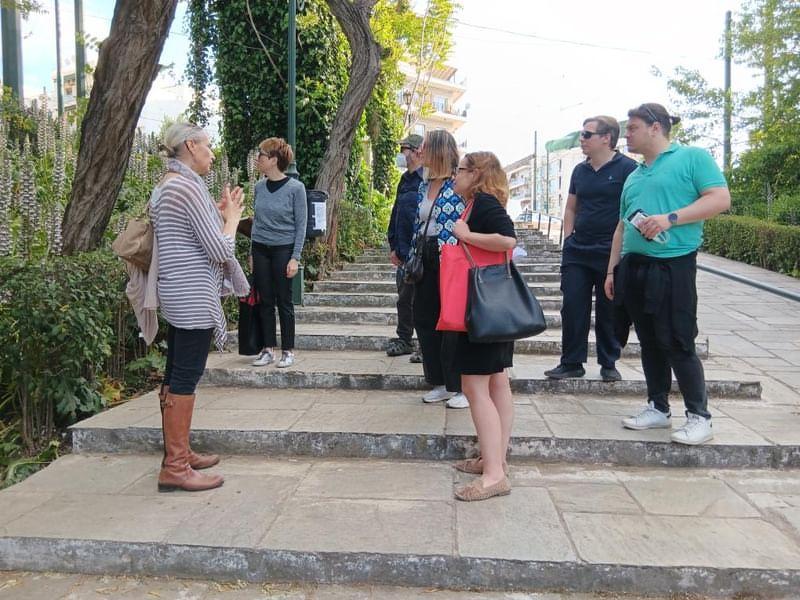

Pact Ambassadors Ourania Constanti and Ifigeneia Souflia focused on the ecological and economic value of the Ilissos River, Athens, 27 April 2024.Pact Ambassadors Ourania Constanti and Ifigeneia Souflia focused on the ecological and economic value of the Ilissos River, Athens, 27 April 2024. 
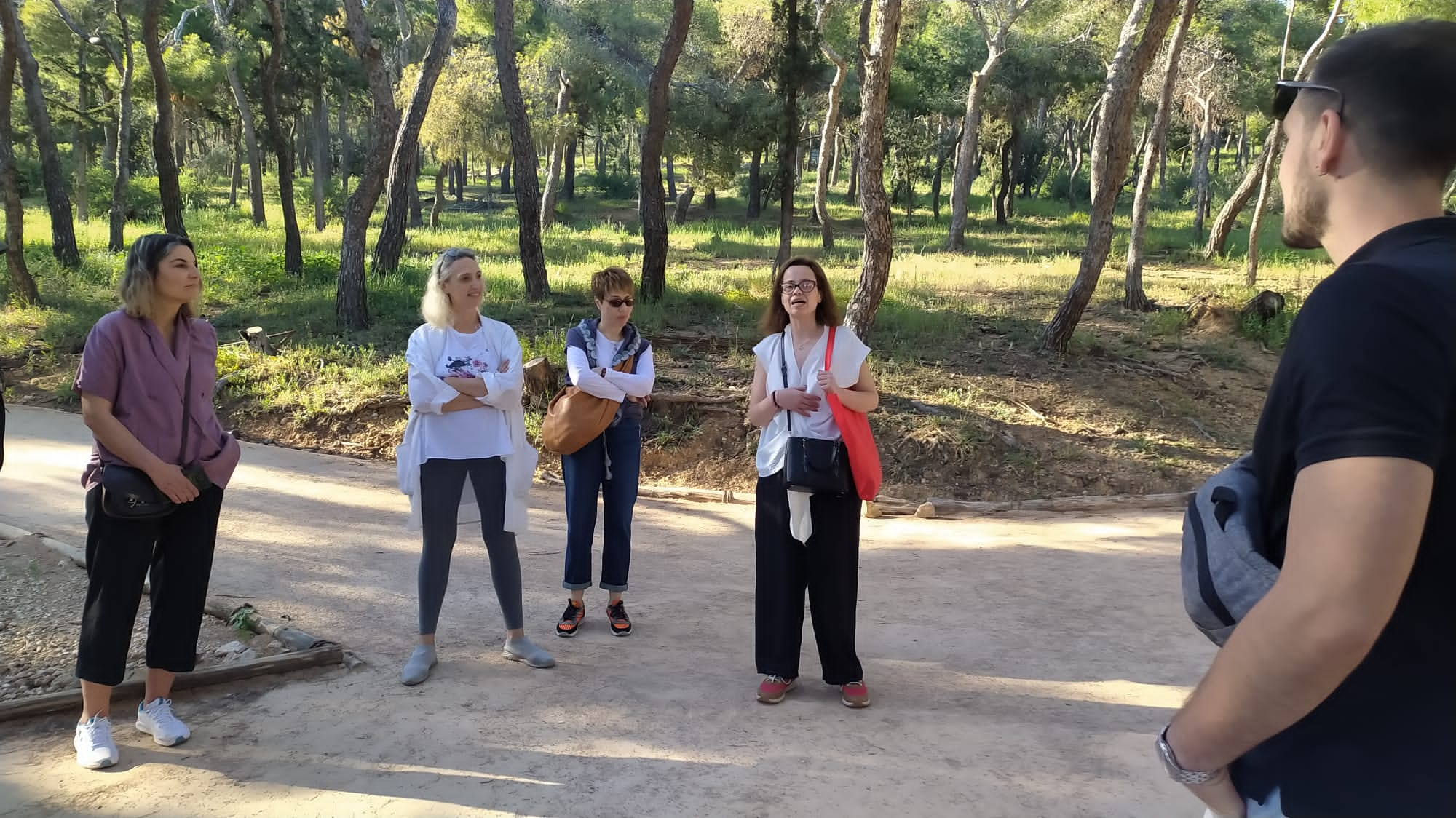
Pact Ambassadors Ourania Constanti and Ifigeneia Souflia led a walk on Lycabettus Hill's contribution to climate resilience, Athens, 30 March 2024.Pact Ambassadors Ourania Constanti and Ifigeneia Souflia led a walk on Lycabettus Hill's contribution to climate resilience, Athens, 30 March 2024. 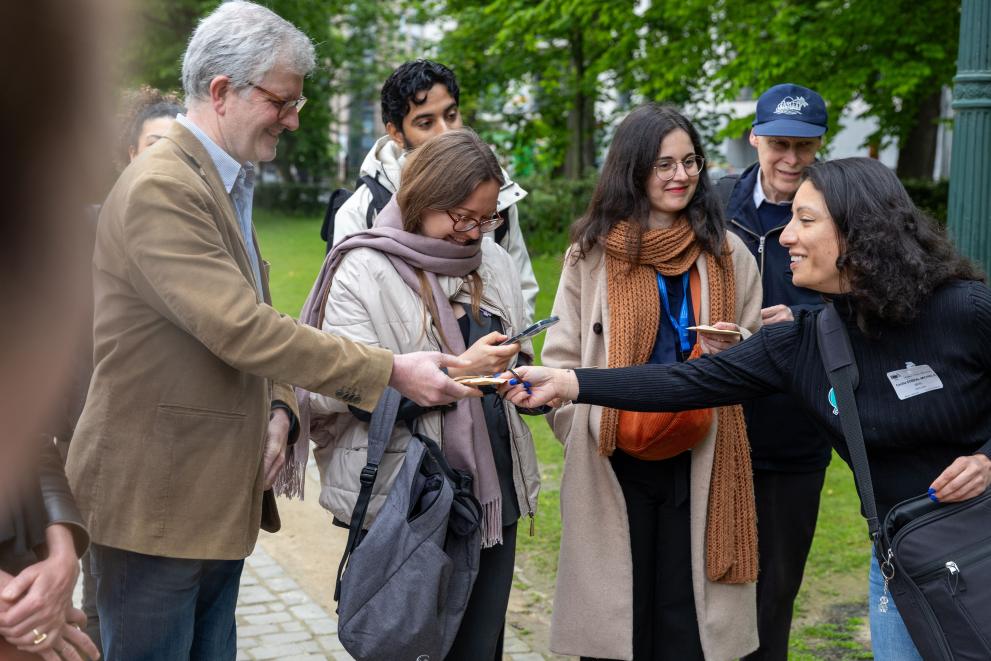
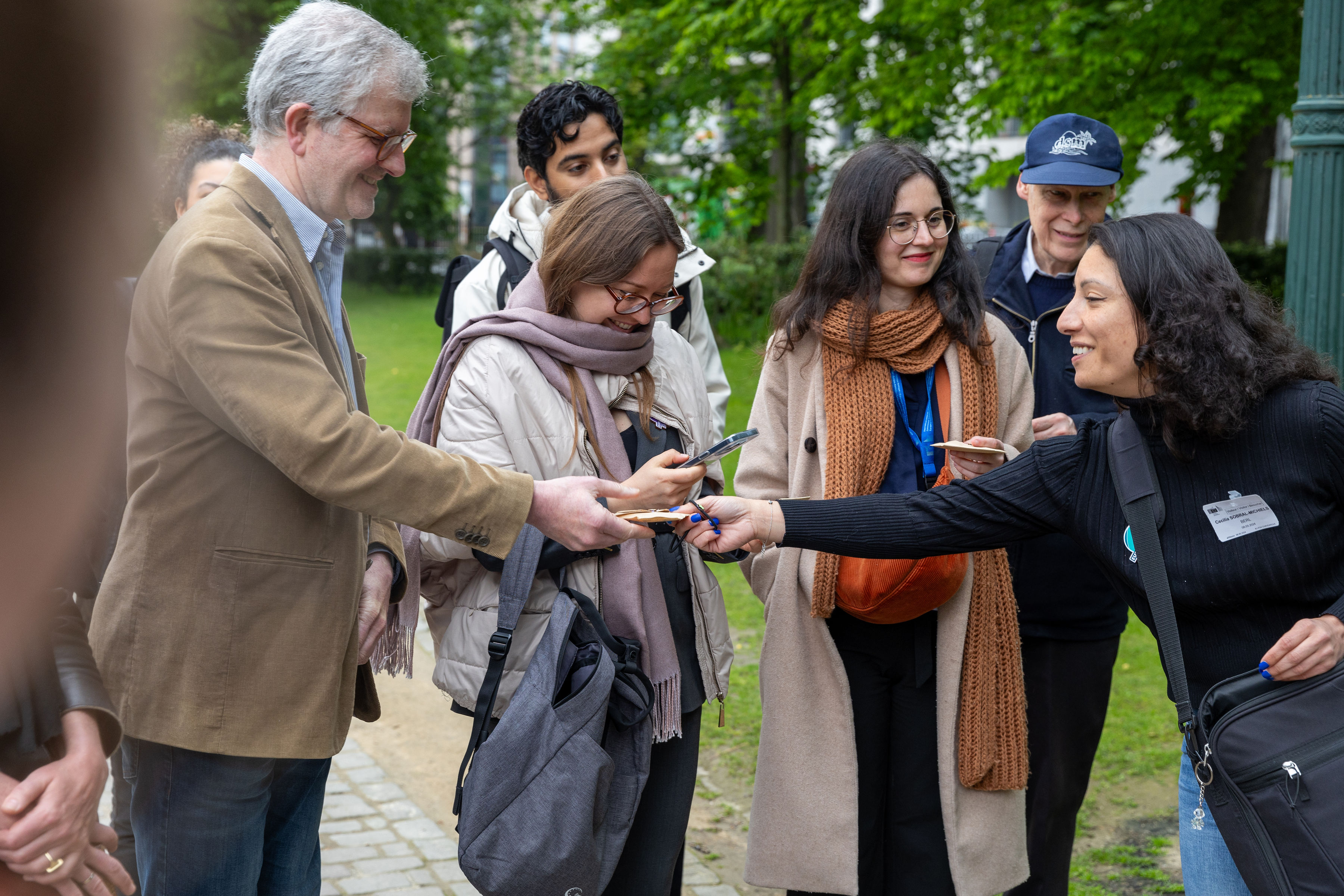
Pact Ambassador Cecilia Sobral handed out flower seeds to participants after telling them about the Green Sparks project, Brussels, 8 May 2024.Pact Ambassador Cecilia Sobral handed out flower seeds to participants after telling them about the Green Sparks project, Brussels, 8 May 2024. 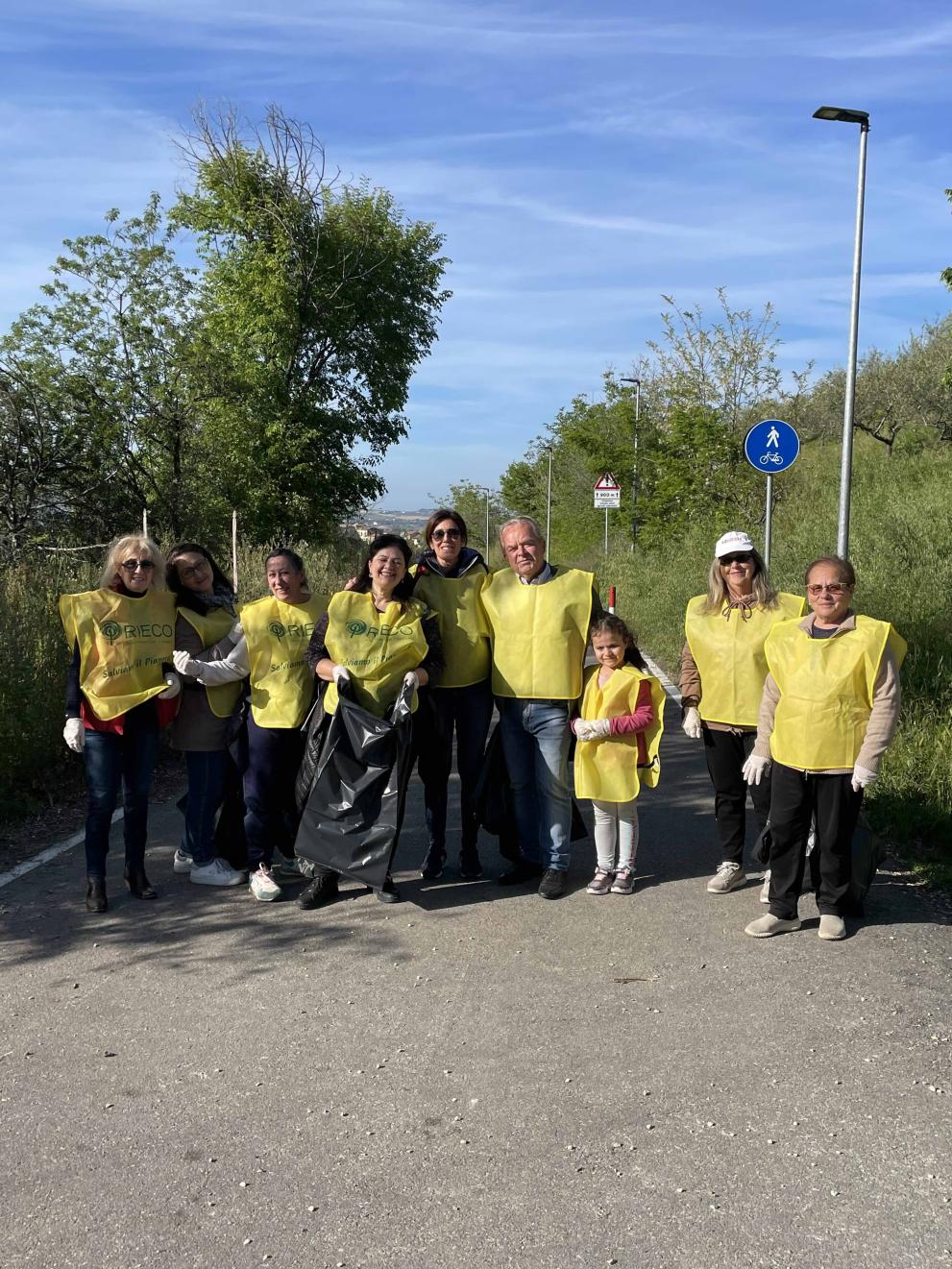
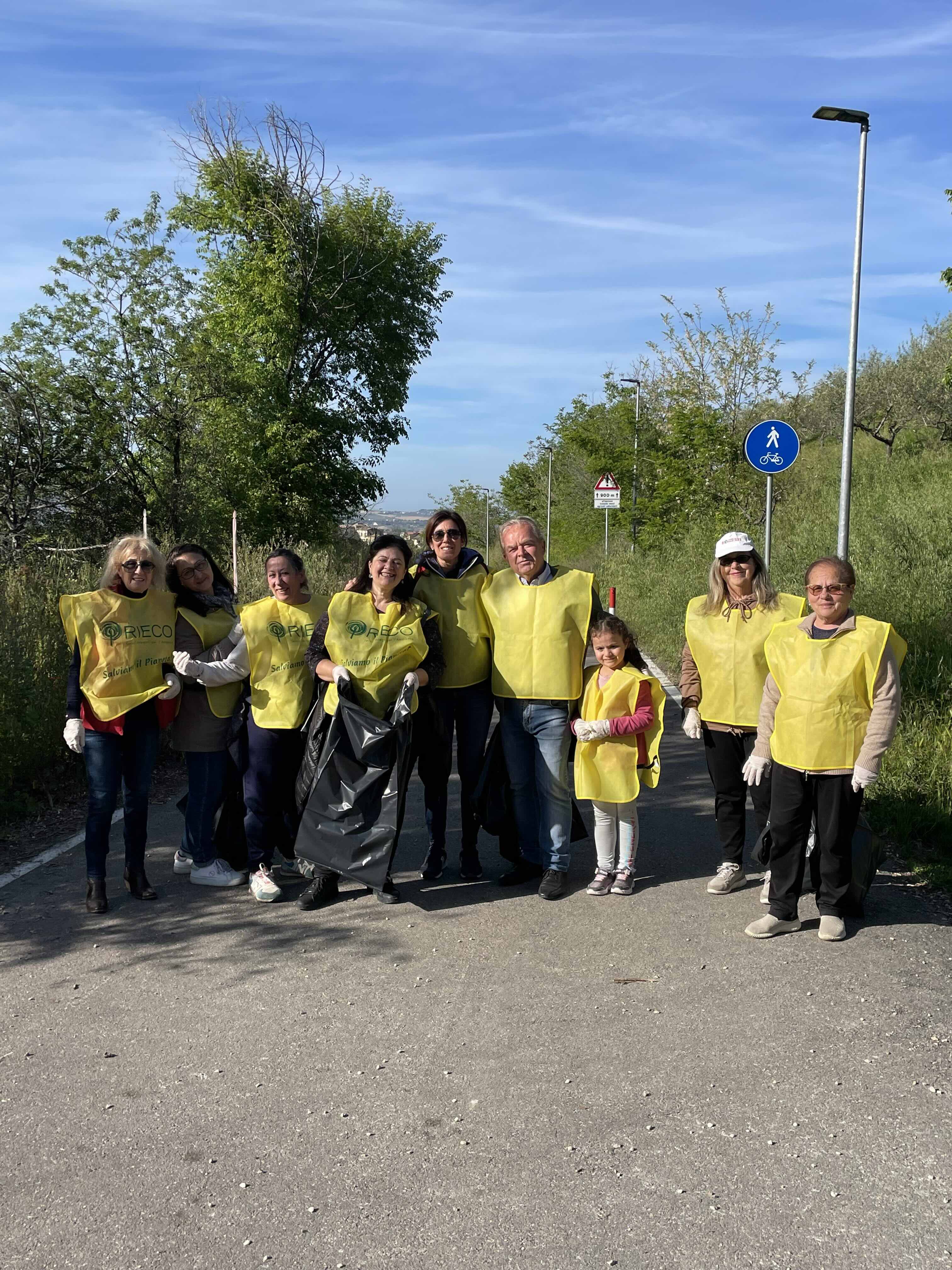
Pact Ambassador Silvia Beccari led a climate walk to show that commitment to a cleaner environment is everyone's duty, Moscufo, Italy, 28 April 2024.Pact Ambassador Silvia Beccari led a climate walk to show that commitment to a cleaner environment is everyone's duty, Moscufo, Italy, 28 April 2024. 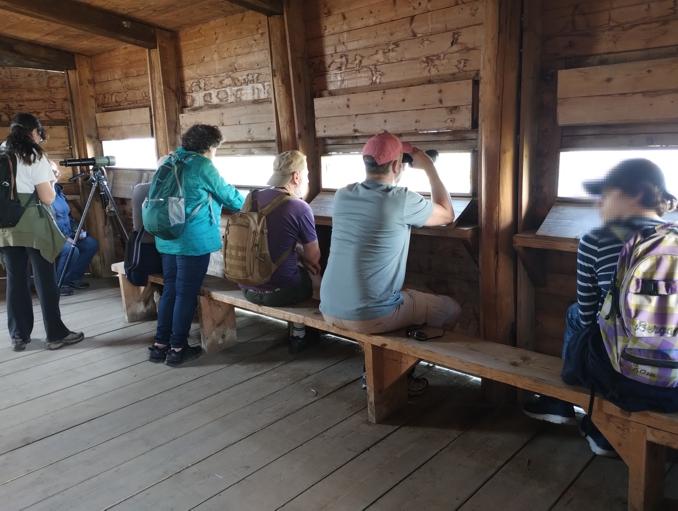

Pact Ambassador Adele Bertini organised a climate and biodiversity walk with WWF and the University of Florence, Tuscany, Italy, 25 May 2024.Pact Ambassador Adele Bertini organised a climate and biodiversity walk with WWF and the University of Florence, Tuscany, Italy, 25 May 2024.
- Before
- Select an area with several points of interest related to climate change in close proximity. Define the tour itinerary, the stops and overall duration based on the interests, age and physical condition of your participants.
- Register as a host.
- Promote your activity yourself or find a partner institution/initiative.
- During
- Begin by welcoming the participants and introducing yourself and the Climate Pact. Consider inviting participants to briefly introduce themselves, why they joined the walk and their expectations (e.g. what they would like to see or discuss).
- Throughout the walk, use the stops to unfold the narrative. Our suggestions:
- outline the local impacts of climate change on people (health and livelihoods) and property (infrastructure like roads or bridges, houses and office buildings);
- showcase examples of climate adaptation1 and resilience to climate change;
- flag that the longer we wait to take action, the more costly and severe the impacts will be;
- showcase circular, low-emission or climate-neutral solutions in transport, consumption, food, buildings or energy;
- showcase citizen-led initiatives, as well as associations, companies or local authorities actively engaged in the green transition2;
- stimulate inclusive dialogue on how people can engage in climate policy and action in their private and professional lives.
- Conclude by thanking everyone for their participation and encouraging them to act and potentially organise their own climate walks with their group(s). If the participants agree, take a group picture. If you would like to share the group photo with the European Climate Pact, please ask the participants to sign this consent form.
- After
- Share the results of your activity with the European Climate Pact.
- To the extent possible, stay in touch and engage with the participants beyond the walk.
Tips
- Select the good practices to showcase in the walk based on your target group’s age, interest and how they may be relevant to their daily lives.
- Try to involve partners. Your stops could include local initiatives such as a packaging-free store, a community garden, or a social bike repair shop. Invite them to participate and to quickly share what they do. Maybe they have something for your visitors to taste, a space for a nice break or an activity to try? These partnerships will also increase the impact of your walk.
- Define your tour itinerary considering the age and physical condition of your participants: stairs may be a barrier; young children or older people will need more time to move from one stop to the other; offer sitting possibilities, ideally sheltered from the sun, wind or rain; a stopping point of interest in the walk gives participants the opportunity to rest.
- Make it fun and inclusive for all. Interact as much as possible and keep an empathic and non-judgmental mindset. If your group is very diverse, try to have something fun/engaging for everyone (e.g. kids, parents, grandparents).
- Follow the planned itinerary and keep the group together but leave some flexibility in your planning to ensure time for questions and interaction.
- Highlight the positives while emphasising the need for more efforts. Make sure that in the course of your walk there is a good balance between examples of best practice and those showcasing the need for improvement. In this way you will highlight the positives while emphasising the need for more efforts.
- The last stop of the walk could be a group activity, such as a game, adjusted to the target group. For example, the group could play:
- ‘Future us’ where each participant is asked to think of and present how the visited environment could look in the future;
- ‘Object theatre’ where each participant should find and present an object that summarises the Climate Walk and sights visited.
Examples of implementation
-
Dresden, Germany - The walking tour of climate friendly practices in the city of Dresden, offered in the context of the Stadt Wandeln project, stops at a workshop where you can make things yourself, a free shop where you can donate old items in good condition that you no longer need, a multi-generation garden that counteracts loneliness, among other interesting places.
-
Graz, Austria - The walking tour of climate friendly practices in the city of Graz offered by Climate Alliance and Energy Agency Styria, explores the old town in a slightly unusual way: participants go looking for clues, solutions, ideas and measures in the areas of climate protection, consumption, mobility, energy, housing and climate change adaptation.
-
Linz, Austria - The KlimaAlps Interreg project in Upper Austria (Linz) developed a climate trail for all the senses and for different educational levels: beginner, intermediate and advanced.
"By engaging in discussions and outdoor activities together, participants form connections and a sense of unity around these important issues."
Csaba Borboly, Romania, President of Harghita County Council and Member of the European Committee of the Regions
Showcase the results and encourage others to scale-up!
- Encourage participants to take pictures during the walk, share them on social media and tag #EUClimatePact and #MyWorldOurPlanet.
- Fill in the form to support further promotion, peer-learning and replication.
Suggestions to continue ongoing engagement
- Encourage participants to join the citizen/community initiatives you showcased in the walk.
- Invite participants to use UN Act Now – AWorld app to reduce their carbon footprint through daily activities such as walking and cycling or reducing food waste.
- Explore other Climate Pact tools to engage with their networks and communities.


